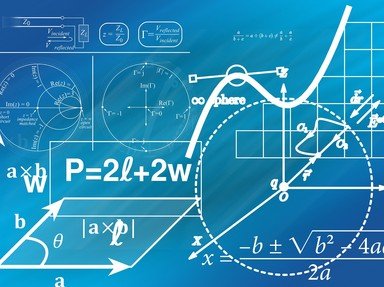Quiz Answer Key and Fun Facts
1. In trigonometry, angles are formed by the rotation of a ray about its endpoint from an initial position to a terminal position. The measure of an angle can be negative or positive, depending on the direction of its rotation. Which direction of rotation returns negative angles: counter-clockwise (ccw) or clockwise (cw)?
2. The two main trigonometric functions, sine (sin) and cosine (cos) differ by the addition of the prefix "co" to "cosine." From where does the "co" derive?
3. The functions cotangent, secant, and cosecant have what relationship to the functions tangent, cosine, and sine (respectively)?
4. Angles are measured in degrees or in radians. The conversion factor with which to multiply to convert from degrees to radians is:
5. The sine function is an odd function (as opposed to even). Which of these statements holds true for a general odd function, f?
6. The cosine function is an even function (as opposed to odd). Which of these statements holds true for a general even function, f?
7. There are 8 trigonometric identities called Fundamental Identities. Three of these are called Pythagorean Identities, because they are based on the Pythagorean Theorem. Which of the following is NOT a Pythagorean Identity?
8. The sum identity for cosine can be summarized as:
9. If you know the following data about a triangle and wish to solve the triangle (find all the missing side and/or angle values), which one is ambiguous; i.e., there may be zero, one, or two solutions for the missing values?
10. Inverses: the relations "arcsin x" and "Arcsin x" differ in spelling because the latter's name is capitalized. What is the distinction of the capitalization?
Source: Author
TonyTheDad
This quiz was reviewed by FunTrivia editor
crisw before going online.
Any errors found in FunTrivia content are routinely corrected through our feedback system.

